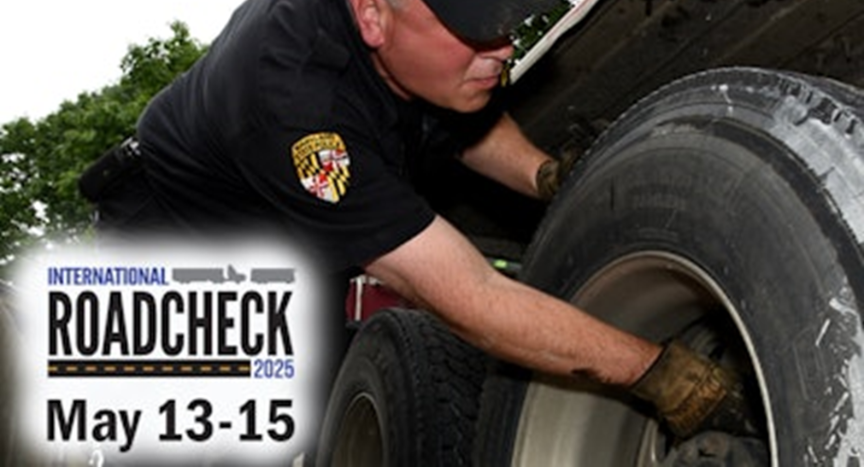If you’re a commercial motor vehicle (CMV) operator, mark your calendar for this year’s CVSA International Roadcheck happening May 13-15, 2025. Recognized as a key highlight in the trucking industry, this annual event focuses on regulatory compliance and vehicle safety across the U.S., Canada, and Mexico during an intense 72-hour inspection blitz.
What is the International Roadcheck?
The CVSA International Roadcheck is an annual initiative designed to enhance road safety. This large-scale operation involves thousands of commercial vehicles and drivers being inspected at weigh stations, inspection sites, and even through mobile units. These inspections focus on verifying adherence to safety regulations, with results collected and shared publicly during the summer.
Each year, the Roadcheck focuses on specific areas of compliance, and this year, the spotlight is on drivers’ records of duty status (RODS) and vehicle tire safety.
What to Expect During the Inspections
CVSA-certified inspectors will primarily conduct the North American Standard Level I Inspection, a comprehensive 37-step procedure. This process ensures compliance with both drivers’ operational requirements and vehicles’ mechanical standards. Additionally, inspectors may vary their approach depending on circumstances, such as weather, using less stringent Level II or Level III inspections if needed.
Spotlight on Driver Safety
For drivers, inspections will include a thorough review of essential documents and compliance checks. Here are some specific areas inspectors will evaluate:
- Licenses and Certificates: Inspectors will review the validity of your license, commercial driver’s license (CDL), medical examiner’s certificate, and skill performance certificate (if applicable).
- Record of Duty Status (RODS): Your hours of service and compliance with the Drug and Alcohol Clearinghouse (in the U.S.) will be closely examined.
- Physical Condition: Inspectors will check for proper seat belt use and signs of drug or alcohol impairment.
Violations in these areas may result in the driver being declared out of service until issues are corrected.
Spotlight on Tires and Vehicle Safety
Inspectors will pay close attention to a vehicle’s tires, as proper maintenance is critical to overall safety. Areas of inspection include:
- Tread Depth
- Inflation Levels
- Visible Damage such as bulges, cuts, or sidewall issues
- Air Leaks or Tread Separation
Beyond tires, the Level I Inspection also evaluates a vehicle’s brake systems, lights, windshield wipers, coupling devices, cargo securement, and more. Additional checks for passenger-carrying vehicles include emergency exits, seat conditions, and electrical systems.
What Happens After an Inspection?
Vehicles that pass Level I or V Inspections without any serious safety violations earn a CVSA decal, valid for three months.
However, if serious violations are discovered, fleet operators and drivers must address these issues before the vehicle can return to service. These violations are classified within the North American Standard Out-of-Service Criteria and must be corrected immediately.
Alternate Inspection Levels
When weather or other conditions make full inspections challenging, inspectors may conduct a Level II Walk-Around or Level III Driver Credential and Administrative Inspection instead. Note, however, that only Level I and V inspections qualify for a CVSA decal.
Source: Truckers News
Image: CVSA











